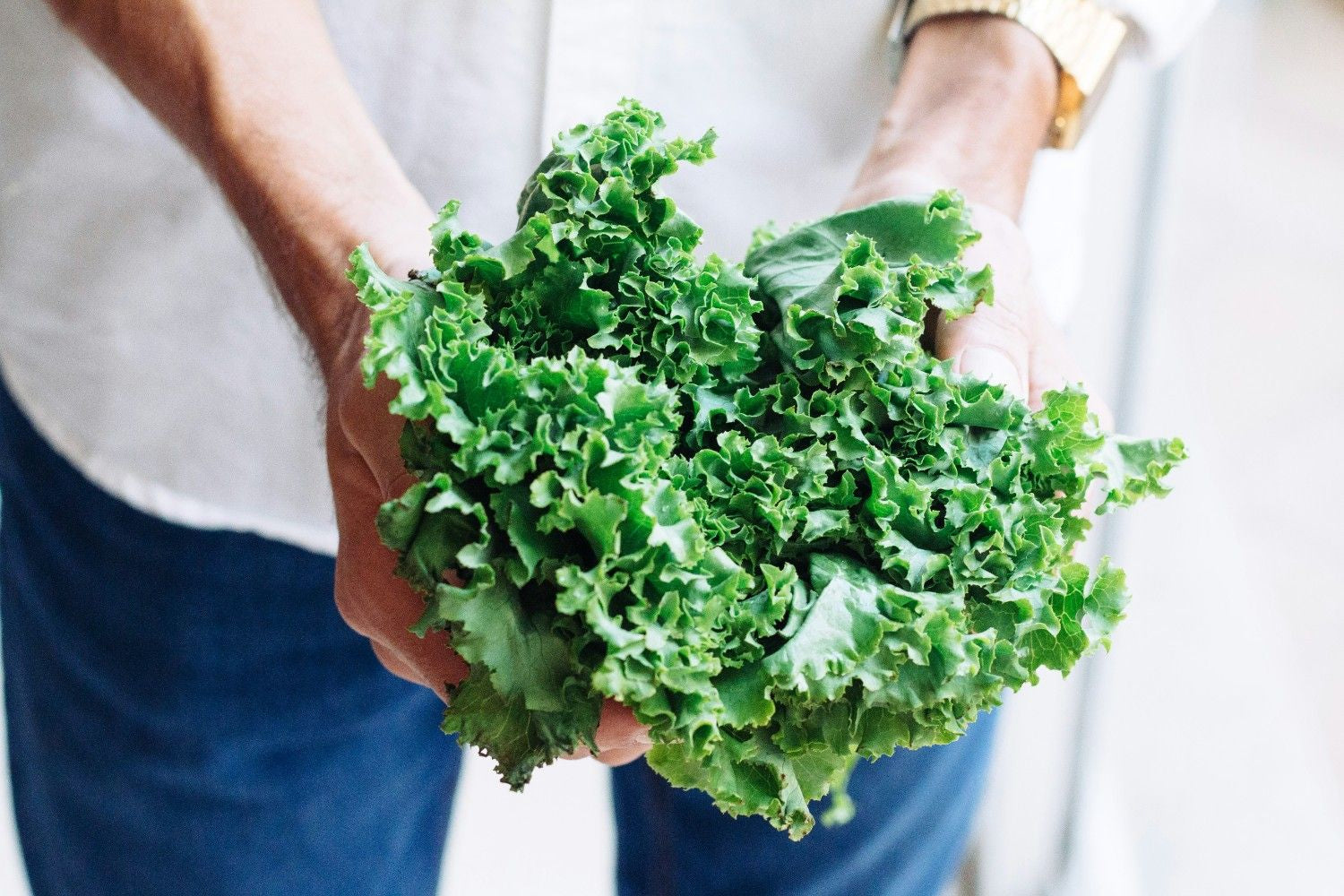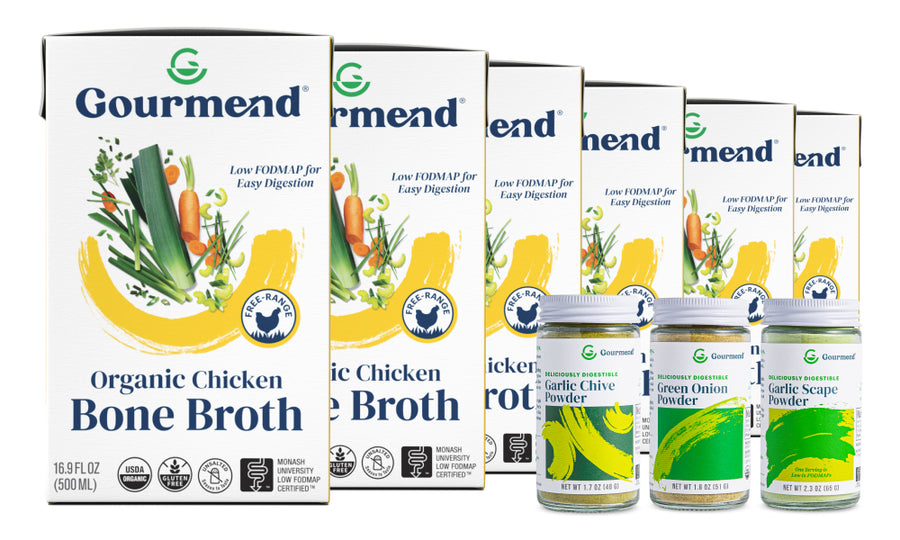Is Kale Low FODMAP? Proven Guide for Easy Digestion

If you're navigating the world of digestive wellness, you've likely encountered the low FODMAP diet—a scientifically-backed approach that helps millions of people with IBS and sensitive digestion find relief from bloating, cramping, and other uncomfortable symptoms. This elimination-style diet focuses on reducing fermentable carbohydrates that can trigger digestive distress, allowing your gut to heal while you identify your personal trigger foods.
Key Takeaways
- The low FODMAP diet is designed to help individuals with IBS and sensitive digestion reduce digestive symptoms.
- This diet focuses on eliminating fermentable carbohydrates that can cause bloating and cramping.
- Following the low FODMAP diet allows the gut to heal while identifying personal trigger foods.
- The approach is scientifically backed and widely used for digestive wellness.
Table of Contents
Enter kale: the dark, leafy green that's earned its reputation as a nutritional powerhouse. Packed with vitamins A, C, and K, plus calcium and antioxidants, kale has become a staple in health-conscious kitchens everywhere. But if you're following a low FODMAP protocol, you might be wondering whether this trendy superfood fits into your eating plan.
The relationship between kale and digestive comfort isn't always straightforward. While some people with IBS thrive on leafy greens, others find certain vegetables can trigger symptoms—making it crucial to understand exactly where kale stands in the FODMAP spectrum.
We're here to cut through the confusion with science-based guidance that helps you enjoy bold, nutritious flavors without compromising your digestive wellness. Let's explore kale's FODMAP status, optimal serving sizes, and practical ways to incorporate this nutrient-dense green into your gut-friendly meal planning.
Quick Answer
Yes, kale is low FODMAP when consumed in appropriate portions. Both curly kale and Lacinato (dinosaur) kale are considered safe for most people following a low FODMAP diet, with recommended serving sizes of up to ½ cup cooked. The key is portion control—larger servings may trigger symptoms in sensitive individuals.
Understanding FODMAPs and the Low FODMAP Diet
Before we dive into kale's specific FODMAP profile, let's establish the foundation. FODMAPs stands for Fermentable Oligosaccharides, Disaccharides, Monosaccharides, and Polyols—a group of short-chain carbohydrates that resist digestion in the small intestine.
When these compounds reach your colon undigested, gut bacteria ferment them rapidly, producing gas and drawing water into the intestinal tract. For people with IBS or sensitive digestion, this process can trigger bloating, abdominal pain, altered bowel movements, and general digestive discomfort.
How the Low FODMAP Diet Works
The low FODMAP approach unfolds in three strategic phases:
- Elimination Phase: Remove high-FODMAP foods for 2-6 weeks to calm digestive symptoms
- Reintroduction Phase: Systematically test individual FODMAP groups to identify personal triggers
- Personalization Phase: Create a long-term eating plan based on your unique tolerance levels
The beauty of this protocol lies in its precision. Rather than following a generic "gut-healthy" diet, you're gathering data about your specific digestive responses, empowering you to make informed food choices that support both nutritional needs and digestive comfort.
Research consistently shows that 70-80% of people with IBS experience significant symptom improvement when following a properly implemented low FODMAP diet. This isn't about permanent restriction—it's about understanding your digestive landscape so you can enjoy the widest variety of foods possible while feeling your best. For a deeper dive into the science and clinical background, see this comprehensive review of the low FODMAP diet.
The low FODMAP diet isn't meant to be followed indefinitely. Its goal is to help you identify which specific foods trigger your symptoms, allowing you to create a personalized, sustainable eating approach that maximizes both nutrition and digestive wellness.
Is Kale Low FODMAP? A Detailed Analysis

The straightforward answer is encouraging: kale is indeed low FODMAP when consumed in appropriate portions. Both major varieties commonly found in grocery stores—curly kale and Lacinato (also called dinosaur or Tuscan kale)—have been tested and approved by leading FODMAP research institutions.
Kale Varieties and Their FODMAP Status
Laboratory testing conducted by Monash University, the pioneering institution behind low FODMAP research, has established that both curly kale and Lacinato kale contain minimal amounts of fermentable carbohydrates. This means they're unlikely to trigger digestive symptoms in most people following a low FODMAP protocol.
Baby kale, while not separately tested in all studies, follows similar patterns to mature kale leaves. The younger leaves may actually be easier to digest due to their tender texture and potentially lower fiber content per serving.
Key Finding: Both raw and cooked kale maintain their low FODMAP status, giving you flexibility in preparation methods without compromising digestive comfort.
Serving Size Matters: How Much Kale Is Low FODMAP?
Here's where precision becomes crucial for digestive success. The low FODMAP classification for kale comes with specific portion guidelines:
- Cooked kale: Up to ½ cup (approximately 65g) per serving
- Raw kale: Similar portion size, roughly 1 cup loosely packed
- Baby kale: Follow raw kale guidelines, approximately 1 cup
These serving sizes represent the tested "safe zone" where kale's FODMAP content remains low enough to avoid triggering symptoms in most sensitive individuals. Exceeding these portions doesn't automatically mean you'll experience discomfort, but it does increase the likelihood of digestive upset.
The reason portion control matters relates to FODMAP accumulation. Even low FODMAP foods can contribute to symptom threshold when consumed in large quantities or combined with other FODMAP-containing foods throughout the day.
Nutritional Benefits of Kale
Beyond its favorable FODMAP status, kale delivers impressive nutritional value that makes it particularly valuable for people managing digestive sensitivities:
| Nutrient | Amount per ½ cup cooked | Benefit for Digestive Health |
|---|---|---|
| Vitamin A | 885 mcg (98% DV) | Supports gut lining integrity |
| Vitamin C | 53mg (59% DV) | Antioxidant protection for digestive tissues |
| Vitamin K | 531 mcg (443% DV) | Anti-inflammatory properties |
| Calcium | 94mg (7% DV) | Muscle function including digestive tract |
| Fiber | 2.6g | Gentle digestive support in appropriate amounts |
This nutritional profile makes kale particularly valuable during the elimination phase of a low FODMAP diet, when you're working with a more limited ingredient palette but still need robust nutrition.
Kale vs. Other Greens: FODMAP Content and Digestibility
Understanding how kale compares to other leafy greens helps you make informed choices and create varied, interesting meals within your low FODMAP framework. Here's how popular greens stack up:
Excellent Low FODMAP Choices
- Spinach: Well-tolerated in normal portions, milder flavor
- Lettuce varieties: Extremely safe, great for sensitive periods
- Arugula: Peppery flavor, excellent raw or cooked
- Swiss chard: Colorful option with similar nutrition to kale
Greens Requiring Caution
- Cabbage: Savoy and red are low FODMAP, but white cabbage is high
- Broccoli leaves: Often high FODMAP, stick to small florets
- Brussels sprouts: High FODMAP, avoid during elimination
- Bok choy: Leaves are safe, but limit white stems
This comparison reveals kale's sweet spot: it offers more robust nutrition than mild greens like lettuce while remaining more digestively gentle than cruciferous vegetables like Brussels sprouts.
Preparation Methods That Support Digestion
How you prepare kale can influence its digestibility, even though cooking doesn't significantly change its FODMAP content. Here are evidence-based preparation strategies:
- Remove tough stems: The fibrous stems can be harder to digest than the leaves
- Massage raw kale: Rubbing leaves with a small amount of olive oil breaks down cell walls
- Chop finely: Smaller pieces require less digestive work
- Cook thoroughly: Sautéing or steaming can make nutrients more bioavailable
Remember that individual tolerance varies significantly. Some people with IBS find raw kale easier to digest, while others prefer it cooked. The low FODMAP status remains the same regardless of preparation method.
When incorporating kale into your low FODMAP meal planning, consider pairing it with our Gourmend shelf-stable broth cartons for sautéing. Our broths are specifically formulated to be low FODMAP, using chives and scallion greens instead of traditional onion bulbs for that rich, savory depth that makes simple kale preparations taste gourmet. For more inspiration, check out our low FODMAP recipes collection.
Best Ways to Enjoy Kale Low FODMAP-Style
Successfully incorporating kale into your low FODMAP routine requires strategic preparation methods that maximize flavor while respecting your digestive needs. Here are proven approaches that deliver gourmet results without compromising comfort:
Simple Kale Preparation Methods
- Classic Sautéed Kale: Heat olive oil in a large pan, add de-stemmed kale leaves, and cook for 3-4 minutes until wilted. Season with salt and pepper.
- Crispy Kale Chips: Toss torn kale leaves with olive oil and sea salt, then bake at 350°F for 10-15 minutes until crispy edges form.
- Massaged Kale Salad: Rub chopped raw kale with olive oil and lemon juice for 2-3 minutes until leaves soften and darken.
- Kale in Broth: Add kale to simmering Gourmend shelf-stable broth cartons during the final 2 minutes of cooking for tender, flavorful greens.
Pro Tip: Our Gourmend broths use chives and scallion greens instead of traditional onion bulbs, creating rich depth that transforms simple kale into restaurant-quality dishes.
Best Low FODMAP Vegetables to Pair with Kale
Creating varied, satisfying meals becomes easier when you understand which vegetables complement kale while maintaining low FODMAP status:
- Bell peppers: Add sweetness and crunch to balance kale's earthiness
- Carrots: Provide natural sweetness and vibrant color contrast
- Zucchini: Mild flavor that absorbs seasonings beautifully
- Cucumber: Refreshing addition to raw kale salads
- Tomatoes: Cherry tomatoes work perfectly in appropriate portions
- Radishes: Sharp bite that complements kale's mineral notes
These combinations create nutritionally complete meals that support digestive health while delivering the bold flavors that make eating enjoyable rather than restrictive. For more tips and background, visit our learn section.
Troubleshooting: What If Kale Still Bothers Your Stomach?
Even with proper portion control, some individuals may experience digestive discomfort from kale. This doesn't necessarily mean you're doing anything wrong—individual tolerance varies significantly, and several factors could be at play.
Possible Solutions
- Reduce portion size to ¼ cup cooked and gradually increase
- Try cooking kale thoroughly rather than eating it raw
- Remove all stems and thick leaf veins completely
- Space kale consumption throughout the week rather than daily
Warning Signs to Monitor
- Persistent bloating within 2-4 hours of eating
- Abdominal cramping or unusual gas production
- Changes in bowel movements or digestive patterns
- Symptoms that worsen with repeated kale consumption
Remember that the low FODMAP diet is highly individualized. While kale tests as low FODMAP in laboratory settings, your personal tolerance may differ based on factors like gut microbiome composition, stress levels, and overall digestive health. For more on FODMAPs in general, see our FODMAP blog.
If kale consistently causes discomfort despite proper portions and preparation, consider substituting with spinach or lettuce varieties, which tend to be even gentler on sensitive digestive systems.
Advanced Integration Strategies
For those ready to expand their kale repertoire, consider these sophisticated approaches that maintain digestive comfort while elevating flavor profiles:
Batch Preparation: Wash, de-stem, and chop kale in advance, storing it in airtight containers. This makes it easier to add appropriate portions to meals throughout the week without exceeding safe serving sizes.
Flavor Layering: Instead of relying on high-FODMAP ingredients like garlic bulbs for flavor, build complexity using low FODMAP herbs and spices. Combine kale with fresh herbs like basil or oregano, and finish with a drizzle of quality olive oil.
Texture Contrast: Mix tender cooked kale with crunchy elements like toasted seeds or nuts (in appropriate portions) to create more satisfying dishes that don't require larger vegetable servings to feel complete.
These strategies help you enjoy kale's nutritional benefits while maintaining the digestive comfort that makes sustainable eating patterns possible.
Your Path Forward with Kale and Digestive Health
The evidence is clear: kale can absolutely be part of a successful low FODMAP lifestyle when approached with knowledge and attention to portion control. Both curly and Lacinato varieties offer impressive nutritional benefits while remaining gentle on sensitive digestive systems in appropriate serving sizes.
The key to success lies in respecting the established guidelines—½ cup cooked or 1 cup raw—while paying attention to your individual response. This measured approach allows you to enjoy kale's rich vitamin and mineral content without compromising the digestive comfort you're working to achieve. For further reading, the Canadian Digestive Health Foundation's overview of the FODMAP diet is a helpful resource.
Rather than viewing the low FODMAP diet as restrictive, consider it a framework for discovering which foods truly serve your body. Kale's favorable FODMAP status makes it a valuable ally in creating varied, nutritious meals that support both your digestive health and overall wellness goals.
Remember that successful digestive health management extends beyond individual food choices. The combination of evidence-based ingredients, proper preparation methods, and high-quality supporting products like Gourmend's low FODMAP broths creates a foundation for meals that are both satisfying and gentle on your system.
For additional low FODMAP recipe inspiration and conversion tools, explore our comprehensive resources at Gourmend's recipe collection and recipe conversion tool.
Your digestive health journey is unique, and kale can be a nourishing part of that path when integrated thoughtfully into your low FODMAP framework.
Check out our Low Fodmap Organic Vegetable Broth
**Frequently Asked Questions
Is kale bad for IBS sufferers?
Kale can be enjoyed by many with IBS, but portion size is key. It contains moderate amounts of certain fibers that might trigger symptoms if eaten in large quantities. Choosing baby kale or cooking kale well can help make it easier to digest, supporting a flavorful yet gentle approach to managing IBS.
How much kale is low in FODMAP?
A safe serving of kale is about 1 cup (approximately 30 grams) of raw kale, which falls within low FODMAP limits. Larger portions may increase the risk of digestive discomfort due to higher fiber and sugar alcohol content. Cooking kale also helps break down fibers, making it more digestible in meals.
What greens are FODMAP friendly?
Several greens are well tolerated on a low FODMAP diet, including spinach, bok choy, arugula, and chard. These provide vibrant color and nutrients without triggering common IBS symptoms. Incorporating these alongside moderate kale servings creates a diverse and gut-friendly palette of greens.
Is kale OK for Sibo?
Kale can be included cautiously in a SIBO-friendly diet, focusing on portion control to avoid excess fermentable fibers that feed bacterial overgrowth. Well-cooked kale tends to be easier on digestion and less likely to cause bloating. Pairing kale with Gourmend’s low FODMAP broths can enhance flavor without adding digestive stress.
What three foods make IBS worse?
Common IBS triggers include garlic, onion, and large servings of legumes like lentils. These ingredients contain high amounts of fermentable fibers and sugars that often lead to bloating and discomfort. Replacing them with low FODMAP alternatives like garlic-chive stems and moderate portions of lentils can maintain flavor while supporting gut health.
Does kale make you gassy?
Kale can cause gas in some people due to its fiber and certain carbohydrates that ferment in the gut. This effect is usually dose-dependent, meaning smaller, cooked portions tend to minimize gas production. Enjoying kale as part of a balanced meal using low FODMAP seasonings and broths can help keep meals both exciting and gentle on digestion.





